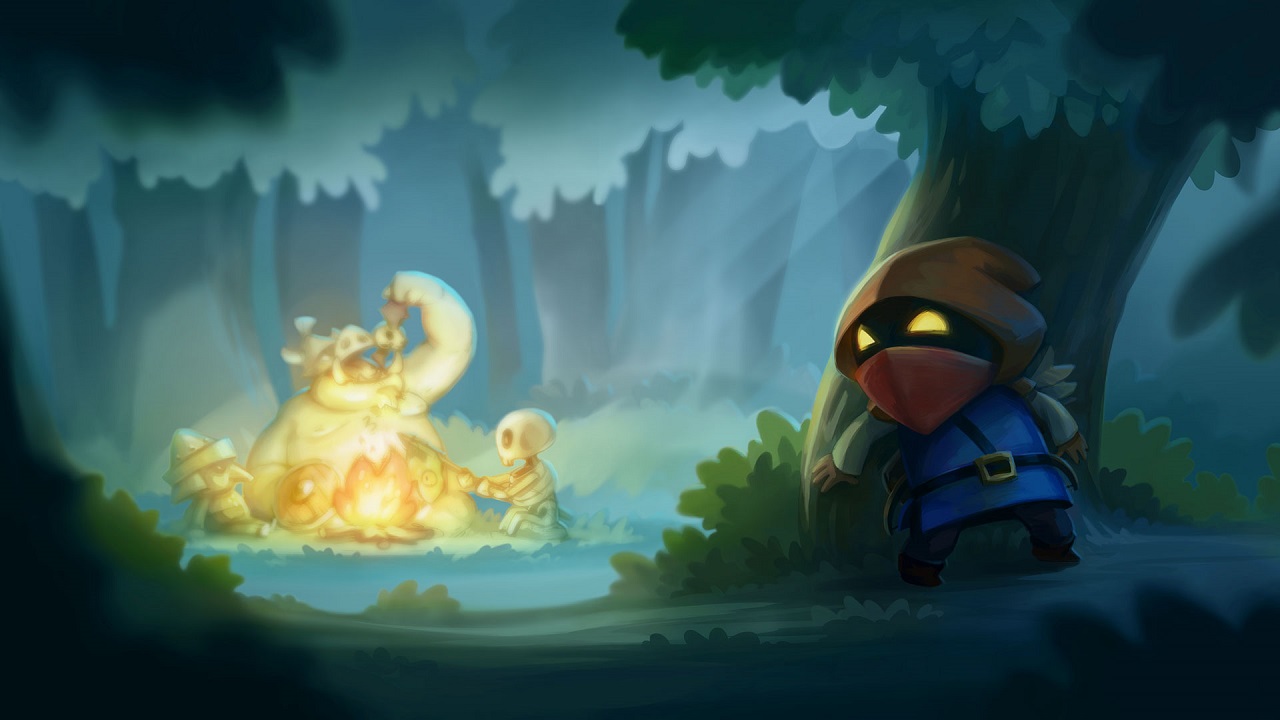The Stealth genre is often one that encourages the player to carefully plan their way through obstacles and enemies so as to remain as undetected as possible, usually with a minimal amount of bloodshed
In Sneaky Sneaky you play as lead character Sneak who is supposed to be all about stealing treasure, but as a player, you’ll be more concerned with finding the most efficient way of murdering every enemy in the room with a switch back-stab, or well-timed arrow as you plunder the kingdom for gold and gems.
Early on, you’ll discover that nothing grants more points for those precious gold star-ratings than killing enemies. The narrative often feels at odds with the gameplay as a result, in an example of ludonarrative dissonance. Sneak transforms from a cute, friendly and lovable kid, into a cold-blooded assassin - collecting his blood tax on unsuspecting guards trying to do an honest days work. Where’s the gold in that?
Though you won’t need to worry about those guards too much during the early stages, Sneak is rather fragile. Its best to pay close attention to enemy pathing as they patrol around each room, and get to know their patterns before attempting to take them out. Thankfully, their vision cone is clearly defined and visible at all times; but it does take some getting used to how it bends around corners and obstacles. In the vast majority of rooms, you’ll find yourself hiding in piles of hay or large patches of grass as you wait for an enemy to path next to you so you can perform a double damage sneak attack.
Being caught also changes up the gameplay - everything shifts to a turn-based style which matches well with the isometric level design. but tends to mess up the game’s pacing. Combat comes with its own set of rules, and they tend to favor your enemies in the early parts of the game. Who moves first is dependent on whether you attacked the enemy or they detected you first. In situations where combat is a certainty, it’s almost always best to initiate it first first with a well-timed arrow to help prevent frustrating enemy swarms who will make quick work of you.

These slime creatures never seem to go where you want and you’ll end up waiting on them more often than not.
These issues with pacing are made more problematic when levels littered with enemies who don’t follow a carefully-designed path. Instead, many will wander around randomly, often moving back and forth between the same spot for several moments. This adds a frustrating element to puzzles which further bogs down the pacing and throws in a level of unpredictable chance to the game. Part of the fun of stealth and puzzle games is that you’re given clearly defined obstacles to overcome with predictable, yet often obscure, patterns - with the joy coming from having to decipher them to clear the obstacle. When half of the on-screen enemies are randomly moving around, you’ll eventually find a hiding spot and just hope they wander over to you, instead of run the risk of engagement. Sure, there are limited-use items to help you deal with these situations - but they’re not always on hand, or worth the trouble it takes to use them.
There are a few rooms and levels where you’ll be able to cleverly plot out your path and execute, but quickly I found that it was rarely worth the effort - taking the murderous approach is just as effective, and yields the same rewards. Which is weird as it takes away any risk reward as the game rewards you even when you feel that you didn’t do as well as you should have in a level. Around half way through the game I started running through levels and ignoring enemies to get things over with faster and still would end up with a gold score.
The game is available on both PC and mobile platforms, and it wasn’t much to surprise to discover the game feels far more suited to touchscreen play than it does using a mouse. On PC, the unresponsive one-button point-and-click controls continually frustrated, and I was never far away from being pulled out of the experience. As it stands, commands feel sluggish and unresponsive, with multiple clicks needed to get Sneak to perform an action. Nothing is more frustrating than trying to execute a stealth kill, only to walk up behind the enemy and see Sneak stand there aimlessly before being discovered. It feels a lot smoother playing on tablet, but the fundamental design flaws remain the same.
In the end, it’s the uneven pacing that killed the initial joy I had at the outset, coupled with an unsatisfying reward system which encourages a brute-force method of completion rather than making you feel like you need to play stealthily. After an encouraging start, Sneaky Sneaky quickly goes from “I wonder what will be thrown at me in the upcoming room” to “ugh, what is the fastest way I can get past this and over with it”. Nothing kills satisfaction more than a frustratingly easy game, and one that feels as though it doesn’t understand its own genre very well. The game rewards you with a gold medal even though you feel you did poorly in the level, and the result is that a game you can easily finish in just a few short hours. The challenge admittedly does ramp up in the final handful of stages, which are actually rather well-constructed. If the whole game had been like that final series of levels, it would have been a lot better.
Ultimately, Sneaky Sneaky isn’t a bad game, but it isn’t a good one either. If Naiad Entertainment decides to make a sequel, they should concentrate on encouraging stealth over slaughter - and take a few design notes from the likes of Garret and Agent 47’s adventures.




